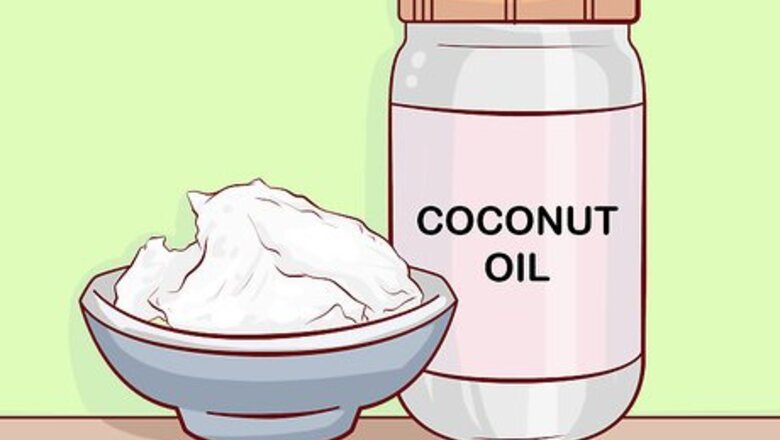
views
Massaging Your Scalp
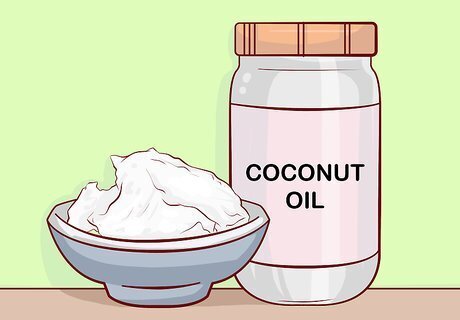
Prepare your oil. Warm up 1 to 2 tablespoons (15 to 30 milliliters) of coconut oil or olive oil in a little dish. You can do this in the microwave or on the stove, but be careful not to let it get too hot. It should be warm and comfortable to the touch. If you want a fancier spa, try one of the following mixtures instead: 1 teaspoon of each of the following: almond oil, coconut oil, olive oil, and sesame oil. 3 tablespoons (45 milliliters) of coconut oil, 2 tablespoons (30 milliliters) of olive oil, and 4 to 5 drops of vitamin E oil. Castor oil is also a great choice, because it's thick and heavy,and really seeps into the cuticle layer of your hair.
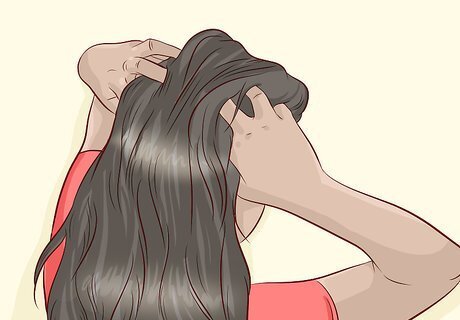
Massage the oil into your scalp from roots to tips for 5 minutes. Spread the rest of the oil through your hair, from the roots to the ends. This will help improve the circulation in your scalp.
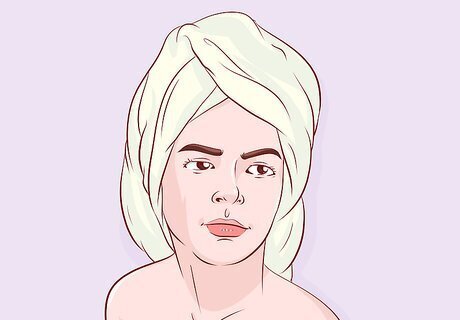
Wrap a damp, warm towel around your head. Dip a clean towel in warm water. Wring out the excess water so that it's damp. Wrap the towel around your head and hair. Secure it with a clip, if needed.
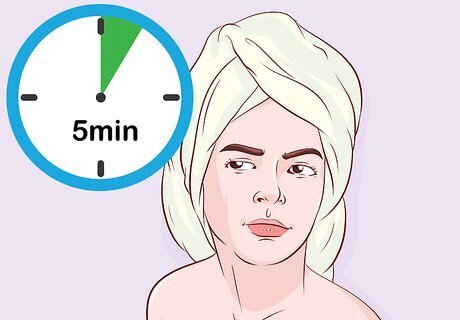
Keep the towel wrapped around your head for 5 to 6 minutes. The heat will trap the oil and open up the hair follicles. It will help the oil penetrate your hair and scalp and nourish it. If you have very dry hair, wait 15 to 20 minutes instead. If you're using extra virgin olive oil, you could let the treatment sit in your hair overnight.
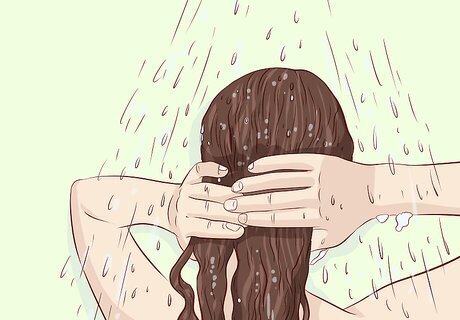
Wash your hair using lukewarm water. Use enough mild shampoo to get the oil out. You can add conditioner if your hair is very dry, but the mask in the next step will be nourishing enough on their own.
Applying the Mask
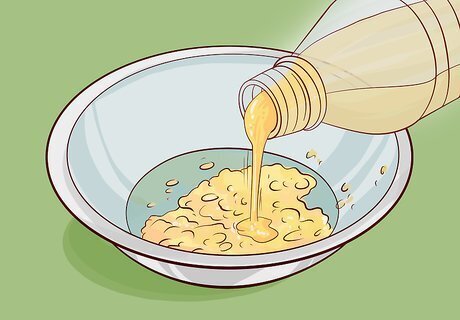
Choose and prepare your mask. You can use any type of hair mask you want. A store-bought one will work just fine, but a homemade one would be even better You can use your own recipe, or you can try one of the ones from the section below. Double the recipe if you have long or thick hair.
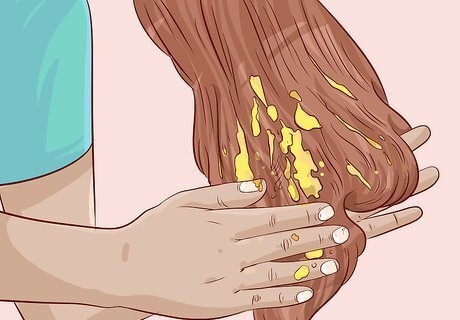
Apply the mask to your hair, starting from the roots. If you need to, divide your hair into sections first. Use a wide-toothed comb to help distribute the mask through your hair. This step can get messy, so it would be a good idea to drape a towel or a hair dyeing cape around your shoulders.

Cover your hair with a shower cap. If you have very long hair, pull it up into a loose bun first, then secure it with a clip. Covering your hair with a shower cap will not only keep you clean, but it will also help trap the heat from your scalp and make the mask more effective.
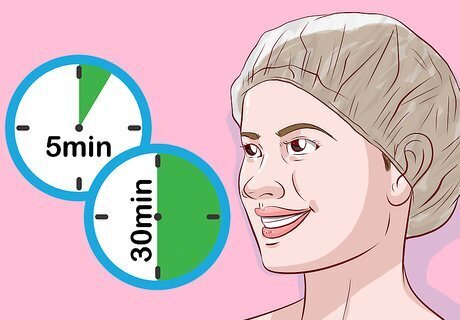
Wait 15 to 30 minutes. How long you wait depends on the type of mask you are using, so be sure to follow the instructions closely. Don't leave the mask on for much longer than directions on the package say. For example, if the mask should be left on for 10–15 minutes, don't sleep in it. It may even cause hair breakage.

Rinse the mask off. Wash the mask out using a mild shampoo and lukewarm water. Follow up with conditioner, then rinse the conditioner out. If the mask recipe has a different set of cleansing instructions, then follow those instead. Leave the conditioner on for a few minutes before washing it out. This will help soften your hair further. Keep in mind that some masks are used instead of conditioner.

Pat your hair dry. Let it air dry and skip the hair dryer. Hair dryers can damage hair.
Hair Mask Recipes
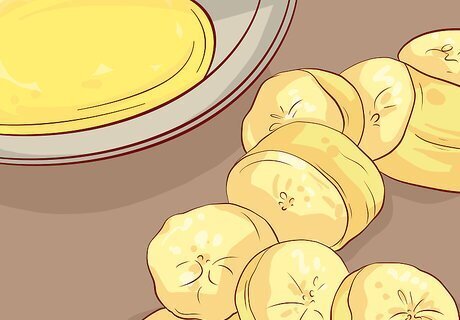
Use bananas and olive oil for a simple, deep-conditioning mask. In a blender, mix together a banana with 1 tablespoon (15 milliliters) of olive oil. Massage the mask into your hair and scalp, then leave it on for 30 minutes. Rinse the mask out with shampoo.

Mix honey and yogurt to make a simple, deep-conditioning mask. Mix together 2 tablespoons (30 grams) of plain yogurt and 1 tablespoon (22.5 grams) of honey. Apply the mask to your hair and scalp, then wait 15 to 20 minutes. Wash the mask out with shampoo. Apply some conditioner to the ends afterwards, if needed.
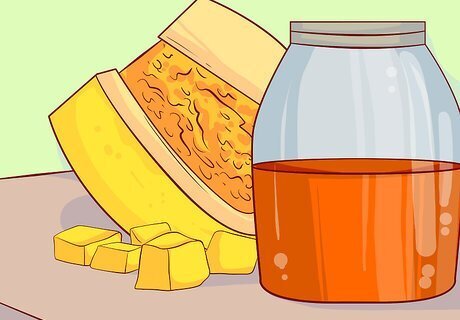
Make a pumpkin-based, deep-conditioning mask fit for Fall. Mix together 1 cup (225 grams) of plain pumpkin puree and 1 to 2 tablespoons (22.5 to 45 grams) of honey. Apply the mask to your hair and scalp, and leave it on for 15 to 20 minutes. Rinse it off when you are done. You may not end up using all of this mask. Use the leftovers as a face mask. Do not use the "pumpkin pie" kind of puree. It is not the same thing.

Make a honey-based mask for dry, damaged hair. Pour ½ cup (175 grams) of honey into a small dish. Stir in 1 to 2 tablespoons (15 to 30 milliliters) of olive oil and 1 to 2 tablespoons (15 to 30 grams) of avocado or egg yolks. Apply the mask to your hair, wait 20 minutes, then rinse it out with warm water.
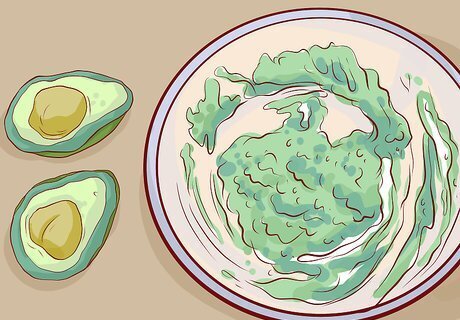
Try a custom, moisturizing avocado mask. Place half of a peeled and pitted avocado into a blender. Add one of the optional ingredients from the list below, then blend the mask until it is smooth. Apply the mask to your hair and leave it in for 15 minutes. Rinse the mask out with shampoo. Repeat this mask once a month for best results. 2 tablespoons (30 milliliters) argan oil, sour cream, or egg yolks for moisture 10 drops rosemary essential oil for a dry scalp 1 tablespoon (15 milliliters) apple cider vinegar for removing build up
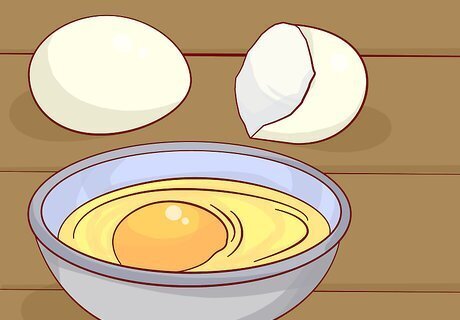
Use eggs to make a simple, custom, moisturizing mask. Pour ½ cup (120 milliliters) worth of egg whites, egg yolks, or whole eggs into a cup. Whisk the eggs until the color is consistent, then apply it to your hair. Leave it on for 20 minutes, then wash it out with cool water. Here is what you should use (and how often) based on your hair type: A mayonnaise and eggs hair mask can add protein and moisture to your hair, and is great for particularly fine or brittle hair. Normal hair: about 2 whole eggs, monthly Oily hair: about 4 egg whites, twice a month Dry hair: about 6 egg yolks, monthly












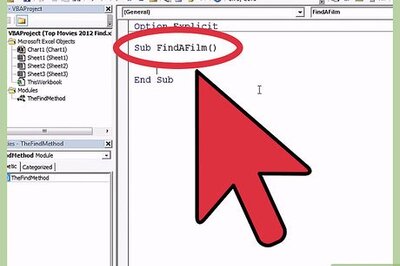



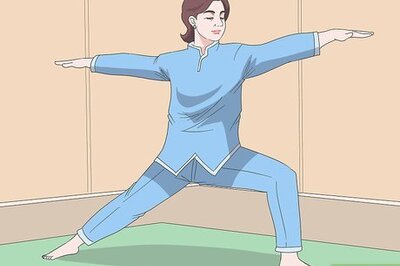



Comments
0 comment